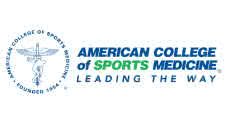American College of Sports Medicine (ASCM) Recommendations

Research Articles with American College of Sports Medicine
The last time the American College of Sports Medicine (ACSM) issued a position statement on the subject of cardiovascular and resistance exercise for overall conditioning was in 1989. In that statement the organization recommended doing aerobic exercise three to five times per week
for 20 to 60 minutes per session at an intensity of 50 to 85 percent of your heart rate reserve. The recommendation for resistance training was twice per week. Just recently, however, the ACSM, along with the United States Centers for Disease Control and the President's Council on
Physical Fitness and Sports, made some new recommendations about exercise-not for physical conditioning but rather to prevent disease.
All three groups concluded that there's an "epidemic of inactivity" that has negative effects on health in our society is estimated that fewer than 22 percent of all adults get enough exercise to realize its health benefits. Note, however, that the levels of activity it takes to reap
the health benefits of exercise are below the levels that bring minimal cardiovascular and muscular conditioning.
Consequently, the ACSM and company are now recommending minimal activity that is less than the previous recommendation-a total of 30 minutes per day for most days of the week. Because most Americans fail to meet even these guidelines, the organizations suggest that people engage in
short periods of activity, from walking up stairs to gardening or raking leaves, along with their other daily exercise activities for a combined total of 30 minutes a day.
It's hard to believe that our society has become so sedentary that, rather than setting reasonable yet attainable goals for fitness and health, we must continuously reduce the recommended levels in order to help Americans change their lifestyles. Fortunately, most of the people who
read this column are already meeting the suggested activity levels-if not the levels given in the 1989 position-and find it difficult to fathom why such a large segment of the population isn't getting even the minimum amount of leisure-time activity recommended for good health.
Recommendations for Children
In August 1993 the ACSM issued an additional position statement on training and the prevention of sports injuries for children and adolescents, specifically that parents and trainers should include general fitness exercises in their children's programs rather than devoting all of the training time to skill development for specific sports. This applies to weight training as well as other athletic disciplines. In other words, it's better to include a wide variety of activities in children's programs not only to encourage overall condition but also to reduce the sport-specific stresses that result in the burnout, over training and injuries that younger athletes often experience. These guidelines came about because it's estimated that more than 50 percent of all overuse injuries sustained by children and adolescents are preventable.It's the responsibility of parents and coaches to make sure that our children attain optimal fitness with minimum injuries due to overwork or stress. It appears that for young and old alike resistance training is just one part of an overall workout program.
Don't Chew Do It
For years it was believed that smokeless tobacco, or chewing tobacco, as it's called, didn't pose a serious health threat in the way that cigarettes do, and in many parts of the country taking a chew is a popular habit among male college athletes. Since the mid-1980s, however, numerous studies have indicated that smokeless tobacco is in fact a health hazard that not only increases the risk of certain types of cancer but also is an addictive substance associated with hypertension and heart abnormalities.In 1988 Congress banned all radio and television advertising for smokeless tobacco, yet a 1993 study performed at the University of California at San Francisco determined that more than one-third of all male college athletes nationwide use it. Consequently, the ACSM released a position stand on the subject, recommending the "cessation of the use of smokeless tobacco products by athletes and that athletic events should not be sponsored by the manufacturers of smokeless tobacco."